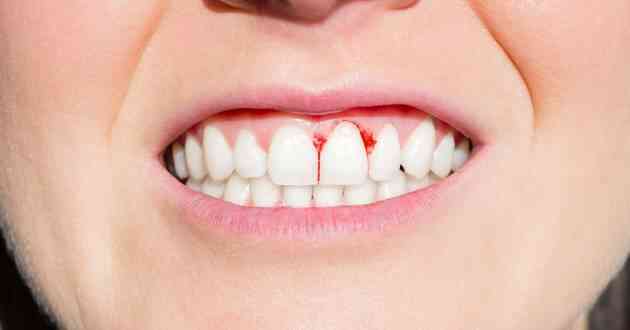The Top 4 Hip Treatment Options
- - Category: Diseases & Conditions
- - 12 Apr, 2024
- - Views: 110
- Save

Health
Hip mobility is essential but sometimes disregarded until it is limited. With the rising occurrence of hip injuries and arthritis, it is critical to understand the available treatment choices so that patients can regain optimal body function. This site is for you if you're an athlete trying to recover, someone with hip osteoarthritis looking for relief, or just want to know how to preserve your mobility.
In this blog, we look at five basic hip therapy alternatives for hip-related disorders. We hope that by demystifying each cure, you will be able to make more informed judgments about your hip health.
The hip joint is a biomechanical marvel, but it may be injured or worn down by ordinary life, resulting in excruciating pain, swelling, and stiffness. Fortunately, modern medicine provides the following treatments:
1. Conservative Treatment
Conservative therapy can effectively alleviate pain and restore hip function, particularly in the early stages of hip disease.
Physical therapy hip exercises are vital for keeping them healthy. A trained therapist will design individualized regimens to target specific hip joint muscle groups. These exercises reduce discomfort and enhance hip function by building strength and flexibility.
In addition to therapy, medication is a conservative treatment option that patients can easily acquire. Over-the-counter (OTC) pain medications such as ibuprofen and acetaminophen are quite beneficial to many people suffering from hip joint discomfort. Healthcare experts may prescribe medications for severe or persistent hip pain.
2. Minimally Invasive Treatment
Minimally invasive treatments are those that provide effective relief using less intrusive ways, decreasing recovery time and the need for major surgery. There are two notable minimally invasive treatments for hip pain:
Corticosteroid Injections
Corticosteroid injections contain corticosteroids, which are strong anti-inflammatory medications. They are then gently injected into the afflicted hip joint or adjacent tissues. Corticosteroids, once injected, quickly reduce the immunological response in the hip, limiting the synthesis of inflammatory molecules. This, in turn, reduces swelling, stiffness, and pain in the hip joints.
Platelet-Rich Plasma (PRP) Therapy
Platelet-rich plasma (PRP) therapy is a novel technique for treating hip pain that relies on the body's natural healing processes. During the PRP procedure, a small sample of the patient's blood is collected and processed to extract and concentrate platelets rich in growth factors and other bioactive proteins. Platelet-rich plasma is then gently injected into the hip joint or surrounding tissues to promote tissue healing and reduce inflammation.
3. Surgical Treatment
When conservative and minimally invasive treatments fail to provide relief for serious diseases, surgical operations become necessary. We will look at the three most common surgical treatments for hips: arthroscopy, hip resurfacing, and total hip replacement.
Arthroscopy
Arthroscopy is a minimally invasive surgical treatment that uses a tiny camera called an arthroscope to inspect and treat disorders in the hip joint. This breakthrough procedure enables orthopedic surgeons to detect and treat hip disorders with minimal incisions, resulting in less scarring, faster healing, and less postoperative discomfort.
Hip Resurfacing
Hip resurfacing is a surgical procedure that aims to maintain more natural hip bone than standard hip replacement. In this procedure, metal implants are used to reshape and cover damaged areas of the hip joint's ball and socket. Hip resurfacing provides an alternative for younger, active patients with hip arthritis who want to increase mobility and minimize discomfort.
Total Hip Replacement
Total hip replacement, also known as hip arthroplasty, is a surgical technique that completely replaces a broken hip joint with a prosthesis. This treatment is often used on those who have severe arthritis or hip fractures.
4. Alternative Therapies
In addition to conventional and surgical treatments, alternative and complementary therapies provide holistic approaches to hip pain management and health improvement. These treatments try to address both the symptoms and the underlying causes of discomfort. Acupuncture and chiropractic therapy are the two most common alternative therapies for hip pain.
Acupuncture
Acupuncture is a holistic technique that uses small needles to stimulate particular areas of the body, hence alleviating hip discomfort. This ancient practice is thought to help release endorphins, the body's natural analgesics, and enhance blood circulation, so lowering inflammation around the hip joint.
Acupuncture may also affect the neurological system, helping to relax and reduce pain perception. This non-invasive method, which is frequently used in conjunction with other treatments, helps many people relieve hip pain.
Chiropractic Care
Chiropractic medicine relieves hip discomfort by focusing on the musculoskeletal system. Chiropractors employ manual adjustments to rectify spinal misalignments, which might have an indirect effect on hip function and discomfort.
Chiropractic adjustments lessen stress on the hip joint, relieve muscle tension, and improve mobility. This drug-free, non-invasive method can effectively treat a variety of hip issues while improving overall musculoskeletal health.



